Choosing a Trumpet
Choosing on the basis of the design
Braces or no braces-a major difference
The brace is a component that is designed to lend more weight to the timbre and the tone of a trumpet. However, the installation of braces makes a considerable difference to the feel of the instrument for the trumpeter. The table below shows how the presence or absence of braces affects the trumpet's timbre.
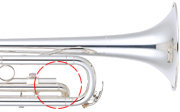
No brace
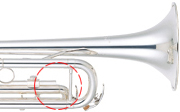
One brace
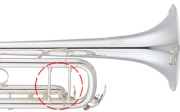
Two braces
| Braces | Timbre |
|---|---|
| None | Bright, with clear definition. Light timbre. |
| One | Rich, yet somewhat resistant. |
| Two | Rather resistant, heavy timbre. |
It's vital to check the bore size too
The bore of a wind instrument is the internal diameter of the tube through which the air passes when the player blows into the instrument. Since the size of the bore determines the volume of breath required, it will also affect the timbre.
In increasing size, bores are described as "medium bore," "medium-large bore," or "large bore." The smaller the bore, the less breath is required, resulting in an instrument that is easier to play and which boasts a subtle, mellow timbre. A larger bore requires more breath and produces a rich, flamboyant timbre and a higher volume.
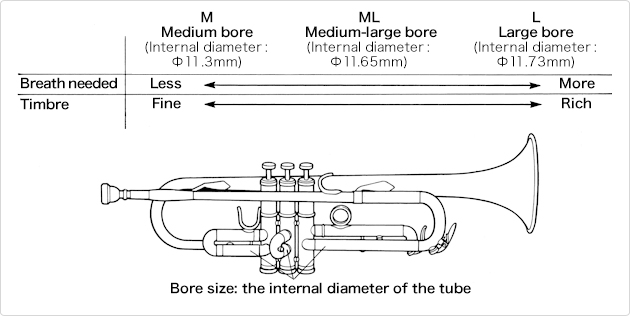
Bore size
A piston trumpet or a rotary trumpet?
The piston system and the rotary system are two of the valve systems on the trumpet. The advantages of the piston system are its bright timbre and the scarcity of any malfunction. However, the fact that the pistons must move up and down can be something of a disadvantage in up-tempo passages. The rotary system meanwhile is characterized by a deep timbre, with clear transitions between notes. It is also easy to operate. The disadvantage, however, is that the rotary trumpet is somewhat prone to malfunction.
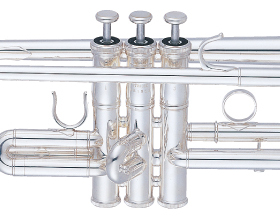
Piston trumpet
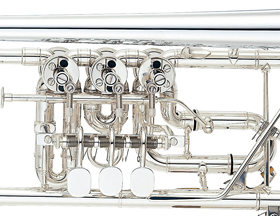
Rotary trumpet
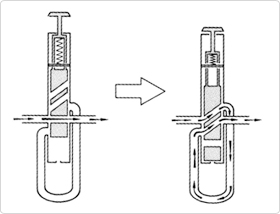
The pistons move up and down a considerable distance
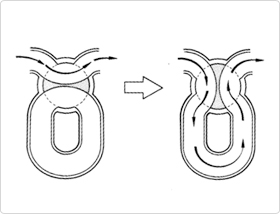
The stroke is small since the air turns through approximately 90?
Musical Instrument Guide:Trumpet Contents
Structure
How the Instrument is Made
Choosing an Instrument
Care and Maintenance
Trivia
- Trumpeters in Bach's time alternated between instruments with a variety of ranges when performing
- The keyed trumpet-the fruit of the evolutionary process
- Famous trumpet works - Concertos, part 1
- Famous trumpet works - Concertos, part 2
- Famous trumpet works - Solos
- Is a Flugelhorn a horn? Or a trumpet?
- The highest note a trumpet can produce
- Aida trumpets for the "Grand March"
- The secret of the trumpet's traditional tone: small impurities!?
